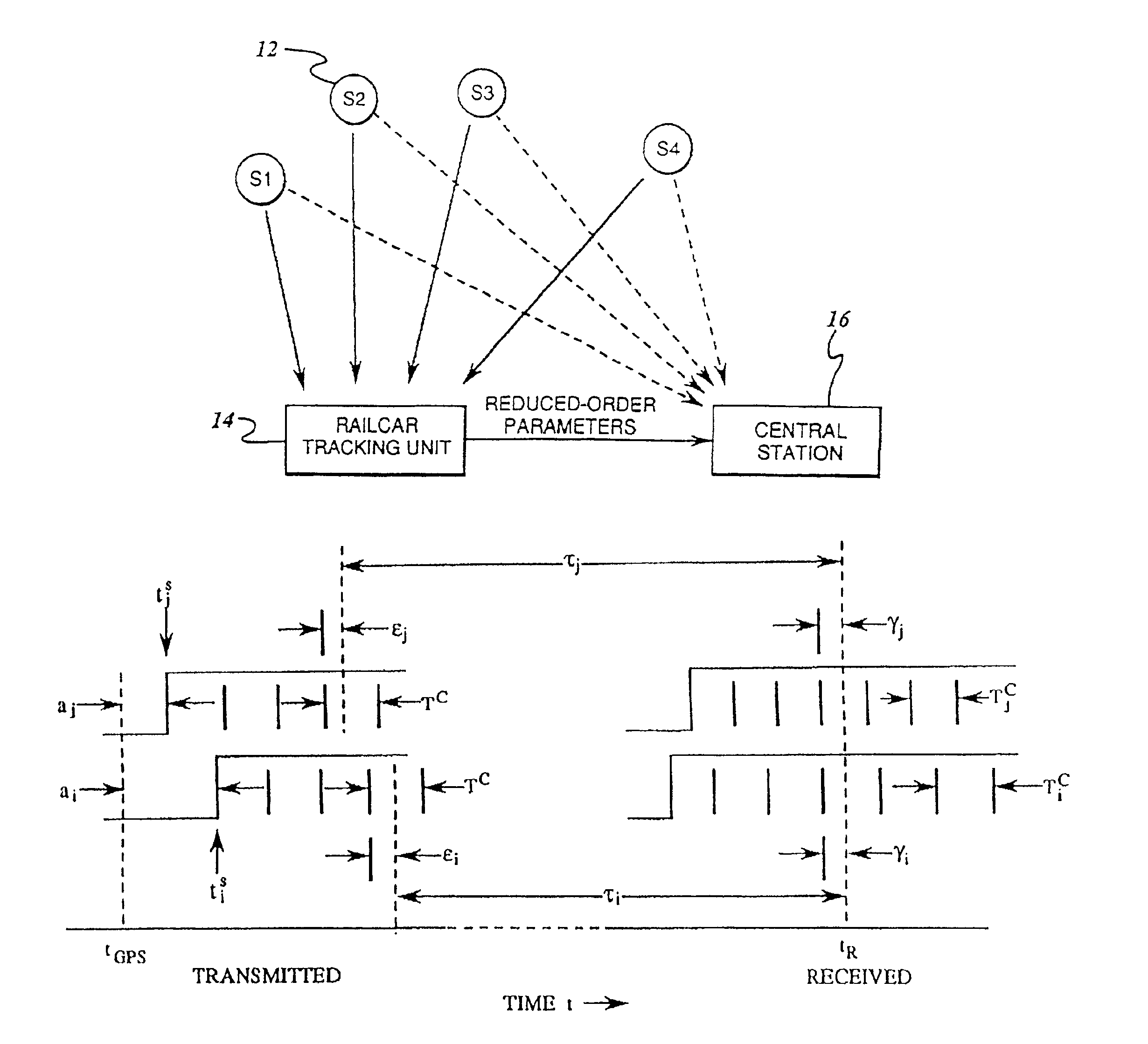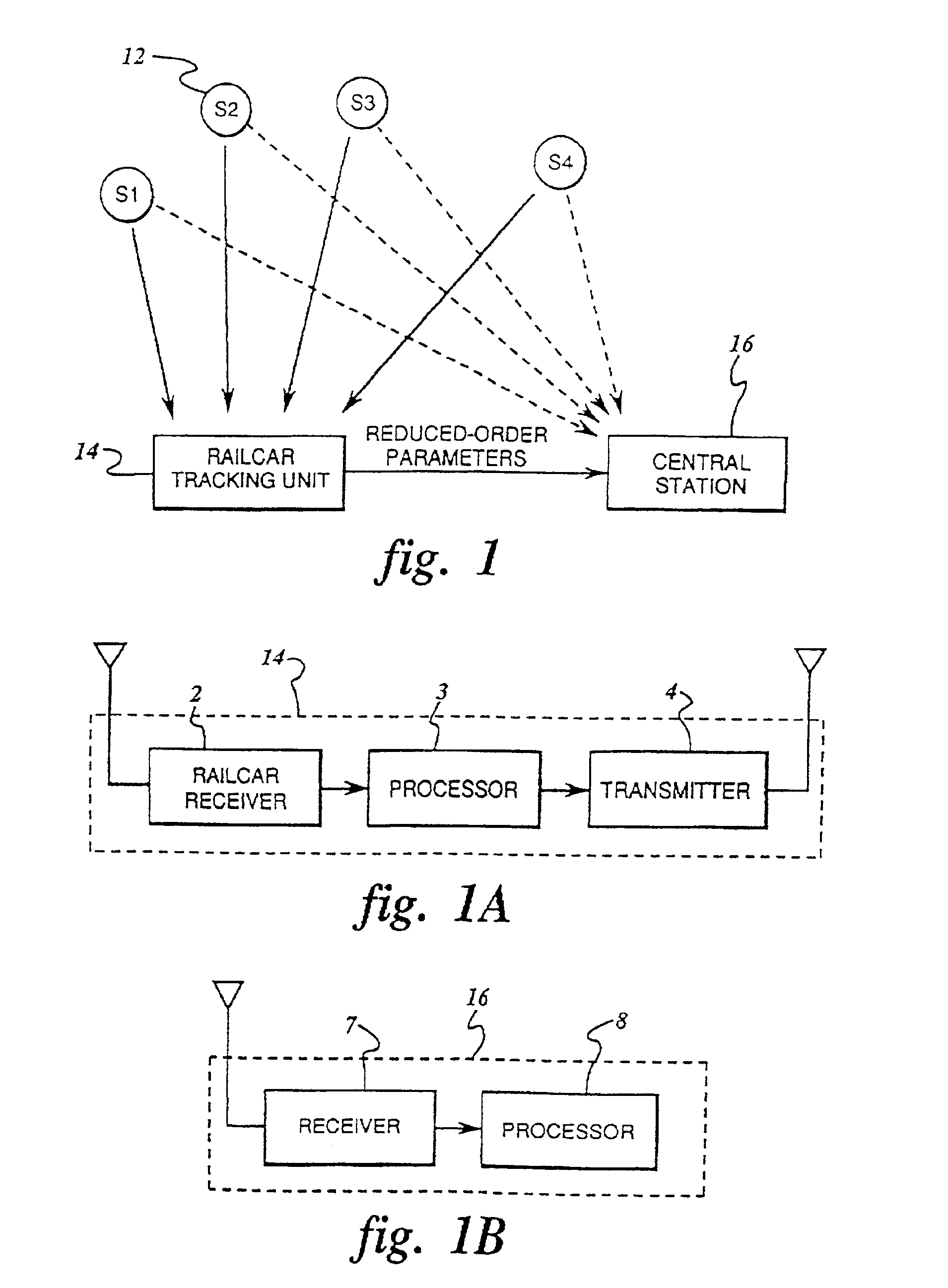Reduced-power GPS-based system for tracking multiple objects from a central location
a gps-based, low-power technology, applied in direction finders using radio waves, navigation instruments, instruments, etc., can solve the problems of inability to complete position determination, satellite and receiver clock synchronization leads to proportional range errors, and the range of receiver-satellite ranges cannot be estimated. , to achieve the effect of reducing energy
- Summary
- Abstract
- Description
- Claims
- Application Information
AI Technical Summary
Benefits of technology
Problems solved by technology
Method used
Image
Examples
Embodiment Construction
[0040]The present invention is directed to a system and method for reducing the power and complexity requirements of a local GPS receiver, which can be carried by a railcar, by effectively requiring only measurement of arrival-time differences between a plurality of GPS satellite signals. Data related to these time differences are transmitted to a central station where the majority of calculations required to determine the receiver (railcar) location are performed. In the preferred embodiments, a standard CDMA receiver is employed with radio frequency / intermediate frequency (RF / IF) front end and Gold-code cross correlators.
[0041]In FIG. 1, the invention is shown as comprising a plurality of GPS satellites 12, an object to be tracked, such as a railcar carrying a tracking unit 14, and a central station 16. Although the invention is herein described in the context of a railcar, the teachings of the invention are applicable to a variety of objects which may be tracked by a GPS or satel...
PUM
 Login to View More
Login to View More Abstract
Description
Claims
Application Information
 Login to View More
Login to View More - R&D
- Intellectual Property
- Life Sciences
- Materials
- Tech Scout
- Unparalleled Data Quality
- Higher Quality Content
- 60% Fewer Hallucinations
Browse by: Latest US Patents, China's latest patents, Technical Efficacy Thesaurus, Application Domain, Technology Topic, Popular Technical Reports.
© 2025 PatSnap. All rights reserved.Legal|Privacy policy|Modern Slavery Act Transparency Statement|Sitemap|About US| Contact US: help@patsnap.com



